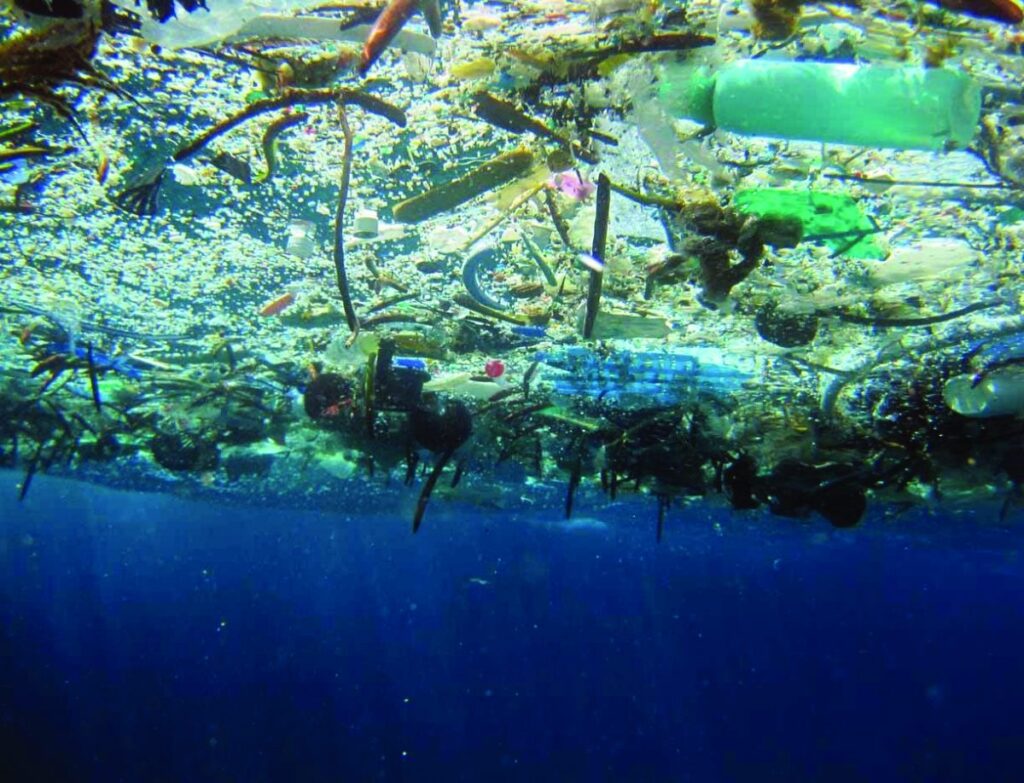Here’s How Plastic Pollution Is Dangerous for Whales, Dolphins, Sea Turtles and Seabirds
How can we save whales and other marine mammals from ocean plastic? Our latest review shows that reducing plastic pollution could reduce marine species mortality.
More than 700 marine species, including half of cetaceans (such as whales and dolphins), all sea turtles and a third of the world’s seabirds, ingest plastic. Plastic can block animals’ digestive systems, leading to slow death by starvation.
Sharp items of plastic can also penetrate the intestinal wall surface, triggering infection and sometimes fatality. Also the tiniest item of plastic swallowed can eliminate a pet.
With around eight million tonnes of plastic flowing into the ocean every year, solving this problem can be daunting. How can we reduce the suffering whales and other marine animals are experiencing from so much plastic? Like a hospital with too many patients, we focus. By identifying the types that are most dangerous to the most vulnerable species, we can provide targeted solutions.
Some Plastic Pollution Is More Dangerous Than Others
In 2016, experts determined 4 items that were most harmful to wild animals: angling particles, plastic bags, balloons, and plastic equipment.
We evaluated this estimate by looking at information from 76 released studies of 1,328 aquatic pets (132 cetaceans, 20 secures and sea lions, 515 sea turtles, and 658 seabirds) from 80 species.
We looked at which items caused the most deaths in each group, and how “deadly” each item was.
We found that researchers were right for three of the four items.
Plastic bags floating in the ocean.
Flexible plastics, such as plastic sheets, bags, and bundles, can block the intestines and cause the highest number of deaths across all animal groups.
These types of plastics are the most common cause of death in cetaceans and sea turtles.
Angling particles, such as internet, lines and hooks, is triggering enhancing fatalities of bigger pets, particularly secures and sea lions.
Education, Conservation About Dolphins in Bali
Turtles and whales that ingest plastic debris have difficulty swimming, increasing the risk of being struck by boats or ships.
Balloons, rope and rubber are particularly dangerous to smaller animals.
And hard plastics are a major cause of death for seabirds.
Fishing debris, metal, Rubber and latex (including balloons) are particularly dangerous to birds, with the highest reported mortality per ingestion.
What’s the solution?
The most effective way to reduce marine wildlife deaths from ingesting plastic is to focus on a few items that are particularly harmful and prioritize reducing their presence in the environment.
Focusing on large plastic items is good because they can break down into smaller pieces.
Smaller pieces such as microplastics and fibers are a lower priority because they cause fewer animal deaths and are harder to deal with.
Flexible plastic sheets, such as plastic bags and bundles, consistently rank in the top 10 most common marine debris types in global marine debris surveys.
Plastic bag bans and taxes have shown a reduction in the amount of plastic dumped into the environment.
Improving local waste management and finding ways to recycle and increase the use of plastic can also reduce waste.
Loose fishing gear can be especially dangerous.
Fisheries have a high rate of gear loss: 5.7% of all nets and 29% of fishing lines are lost each year in commercial fisheries.
Introducing minimum standards for gear that is less prone to loss or higher quality could reduce losses.
Other measures may also help, including
- Providing incentives for gear renewal and disposal of damaged nets
- Threatening or prohibiting activities with a high negative impact of losing fishing gear
- And threatening disposal activities.
Approaching and educating some recreational fishers by showing the risky impacts of fishing gear can be useful.
Balloons, latex and rubber are relatively rare in marine areas, but can still be deadly, especially to sea turtles and seabirds.
Discouraging the release of balloons intentionally and unintentionally at events and celebrations requires regulation and public assessment changes.
A combination of regulatory changes with behavioural change campaigns is the most effective way to reduce beach litter in Australia.
Reducing plastic waste, fishing gear and latex/balloons released into the environment is likely to have the best effect of reducing direct marine wildlife mortality.
Bali Exotic Marine Park Provides Marine Mammal Conservation for Children
Knowing about plastic waste or plastic pollution in the ocean affects all marine mammals. If you want to know more about education about whales, dolphins to sea turtles, then Bali Exotic Marine Park is able to provide you with information about these marine mammals. So regarding further information, you can directly visit Bali Exotic Marine Park located on Jl. Eksotik Pedungan Bali Denpasar.
